Some Versions of Pastoral is the outcome of a recent innovation in David Salle’s art: his use of artificial intelligence as a tool to create dynamic remixes of his earlier paintings. These distorted, illogical, often hilarious compositions take as their starting point Salle’s Pastorals (1999–2001) – paintings inspired by a 19th-century opera backdrop that depicts a romantic couple seated in an idyllic, alpine glade.
David Salle’s Tree of Life is an invitation to investigate both ignorance and knowledge, good and evil, with the necessary humour. — Bernard Bilstène, honorary director of the Centre Pompidou
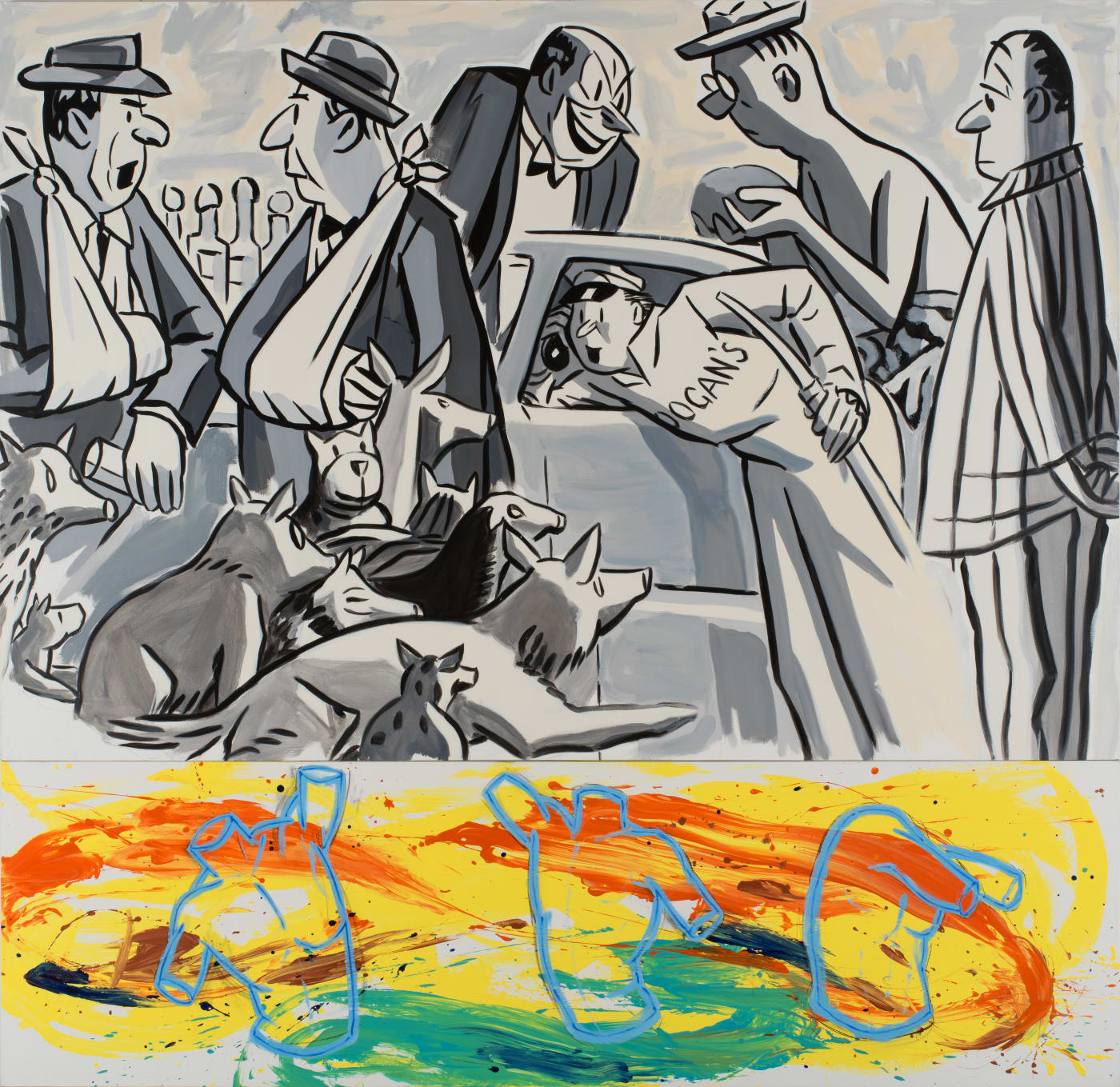
261.6 x 269.2 cm (103 x 106 in)
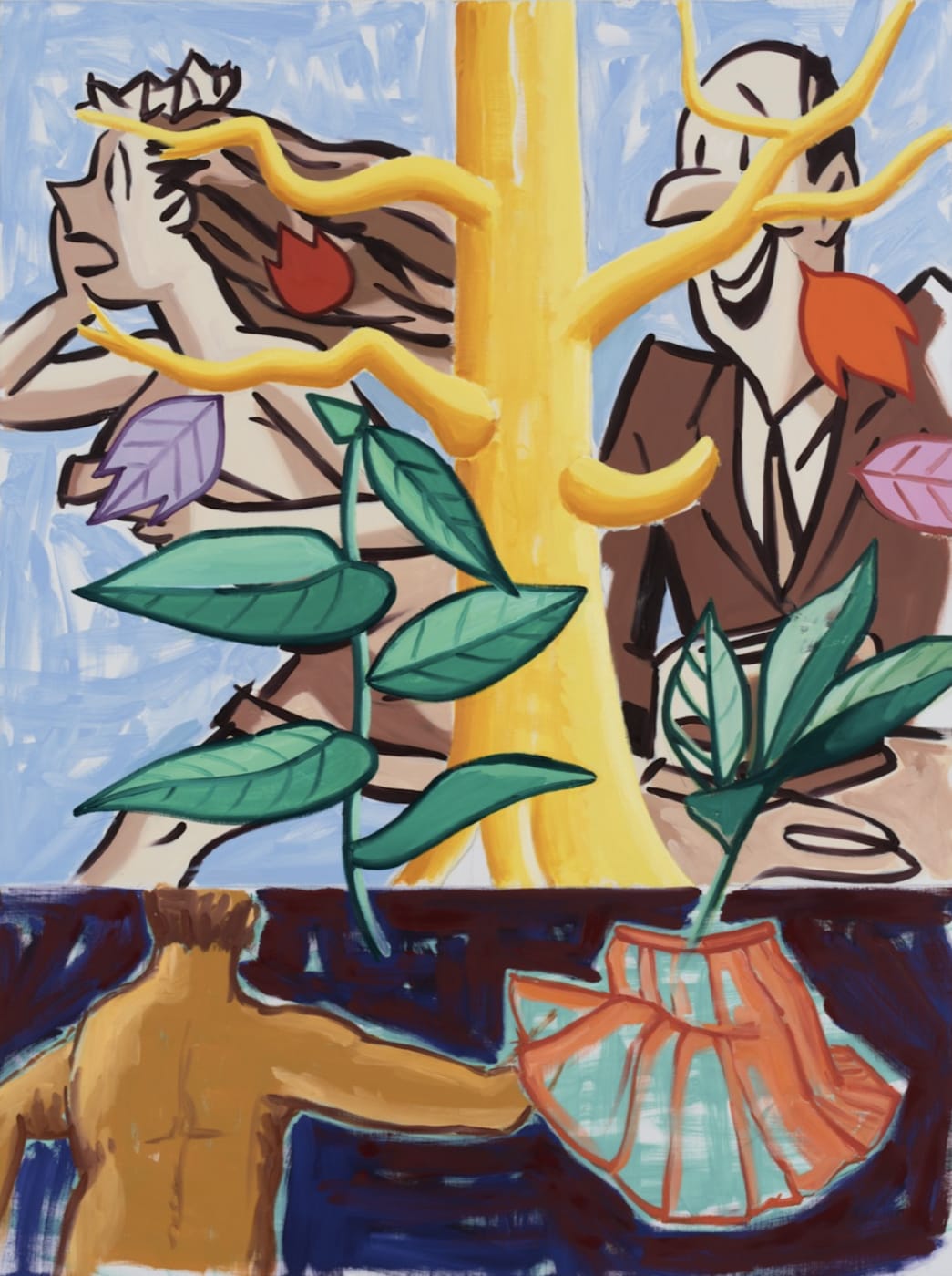
Oil and acrylic on linen
142.2 x 106.7 cm (56 x 42 in)
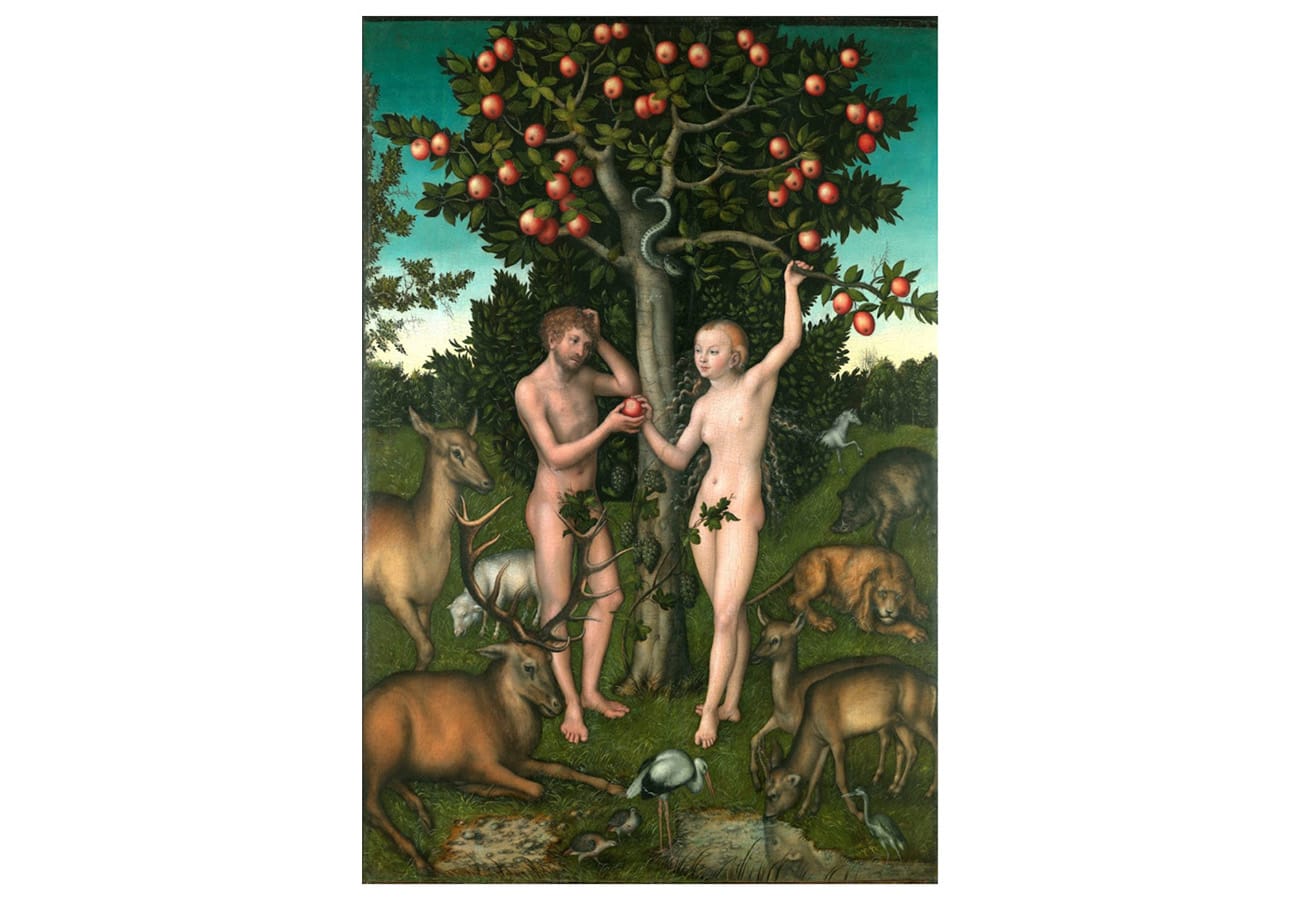
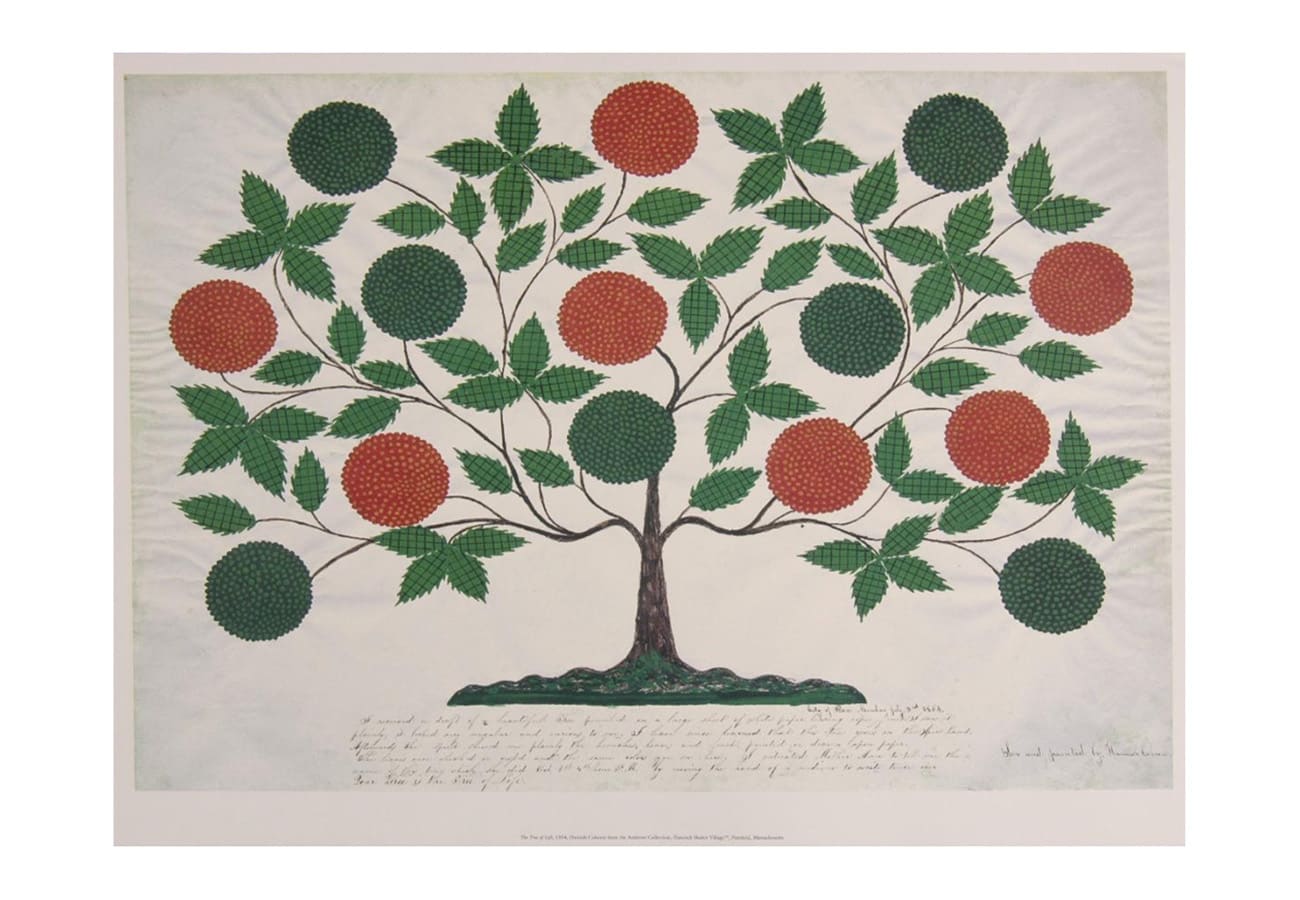
The motif of the tree reverberates throughout the history of art, from the Garden of Eden, as depicted by Lucas Cranach the Elder in 1528, to the 19th-century drawings of Shaker artist Hannah Cohoon. Trees have also often been used in attempts to draw a direct lineage from French painting to American Modern art, which has long been one of the foundational myths of American painting. All of these references coalesce in the new paintings by Salle, who identifies the tree with a form of collective experience, a lineage of which we are all a part.
The tree is a wonderful image that people have been painting, I'm sure, since they first started picking up a brush. [...] It's really one of the most amazing structures, and as a pictorial device, it's this anchor. — David Salle

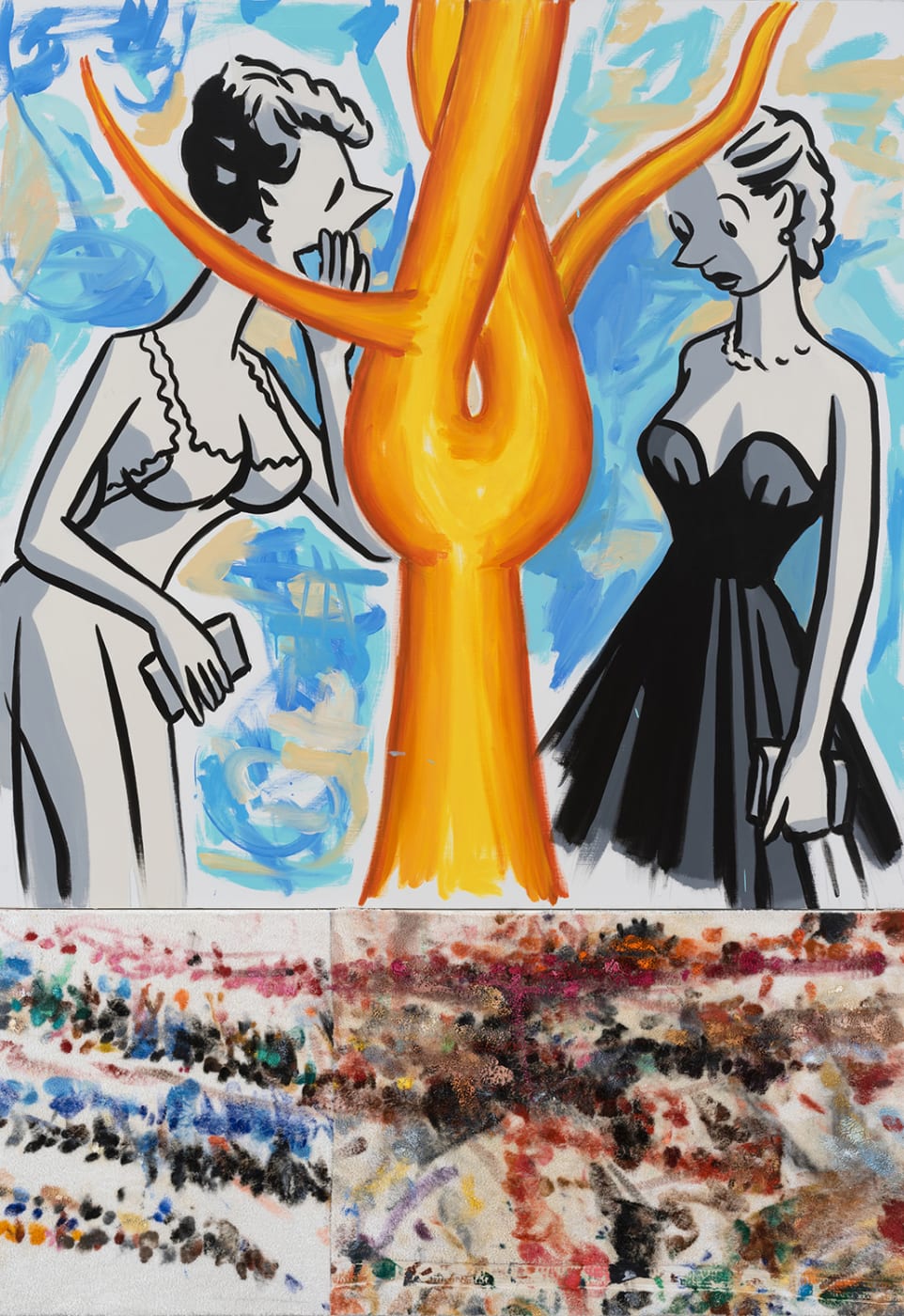
In each predella, Salle alternately pours, splashes and dabs paint in bright colours, sometimes overlaying anatomical sketches or Matissian felt cutouts in an experimental way that contrasts with the schematic narrative constructed in the upper sections. In Gossip (2022), he collaged a towel used to remove excess paint from his brushes. The serendipitous pattern of colours this casual painterly gesture creates becomes a counterpoint to the artist’s deliberate approach in the scene above.
Gossip, 2022Oil and acrylic on linen with cotton toweling
198.1 x 137.2 cm (78 x 54 in)
The bottom panel, by definition, is a counterpoint to the larger panel. And as such, it can take any form. It can be painted in any way, it can be any colour. It can be a combination of forms, pure abstraction, linear forms, combinations of two, applicated collage forms, which gives me a lot of freedom. — David Salle
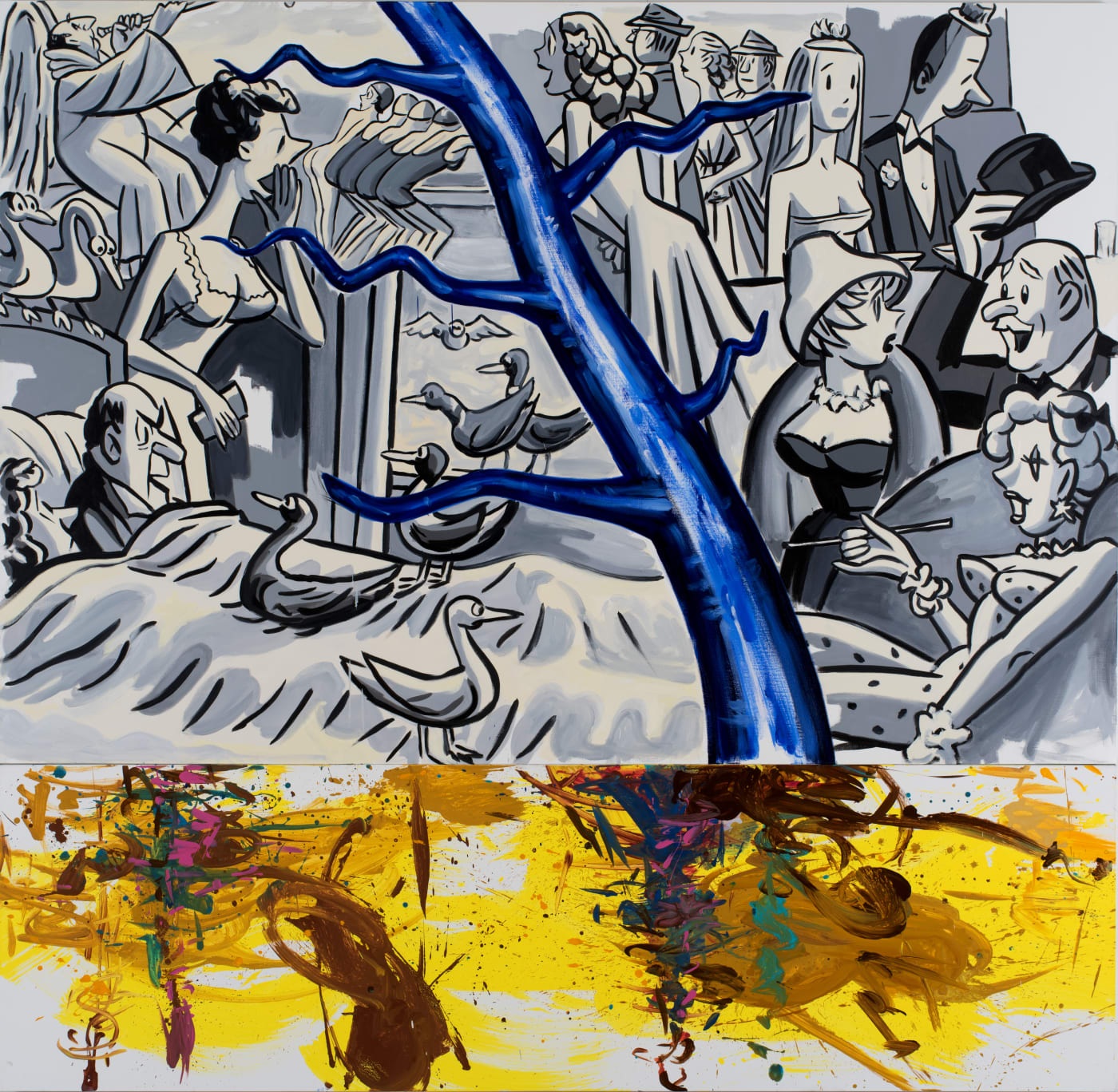
Paintings like The Old Crowd (2022) act as an encore, bringing together the entire cast of the series. The group of characters is looked upon bemusedly by animals, just as in Lucas Cranach the Elder’s famous depiction of Adam and Eve. With ever-more gestural markings in the lower parts, the paintings in This Time with Feeling bear witness to the cacophony of modern life, or as museum curator Bernard Blistène writes in the exhibition catalogue, ‘something like what the world was at its beginning and what it would have unfailingly become.’
The Old Crowd, 2022oil and acrylic on linen
261.6 x 269.2 cm (103 x 106 in)
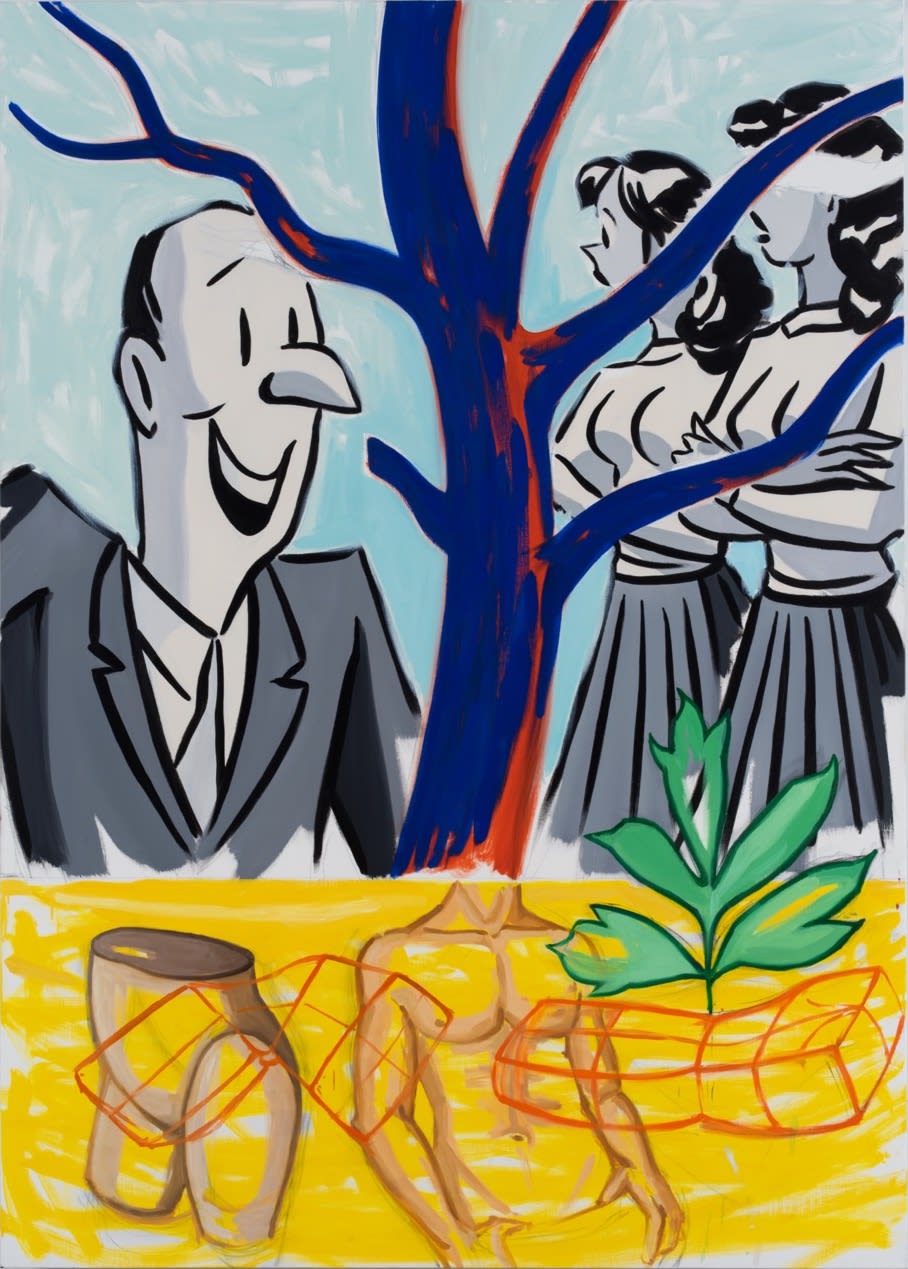
Viewers are encouraged to identify with stylised black-and-white figures of men and women acting out a silent human comedy in the upper part of the paintings. These are drawn from mid-century New Yorker covers by Peter Arno, whom Salle admires for his ‘ability to sell a gesture or a situation with very few brushstrokes.’ The cartoons came to define New York society from the first year of the magazine’s publication in 1925 until Arno’s death in 1968.
Tree of Life, False Smile, 2022
oil and acrylic on linen
177.8 x 127 cm (70 x 50 in)
Perhaps Peter Arno and his collaborators said everything there was to say about the boom days in New York that couldn’t be said by a jazz band. — F. Scott Fitzgerald
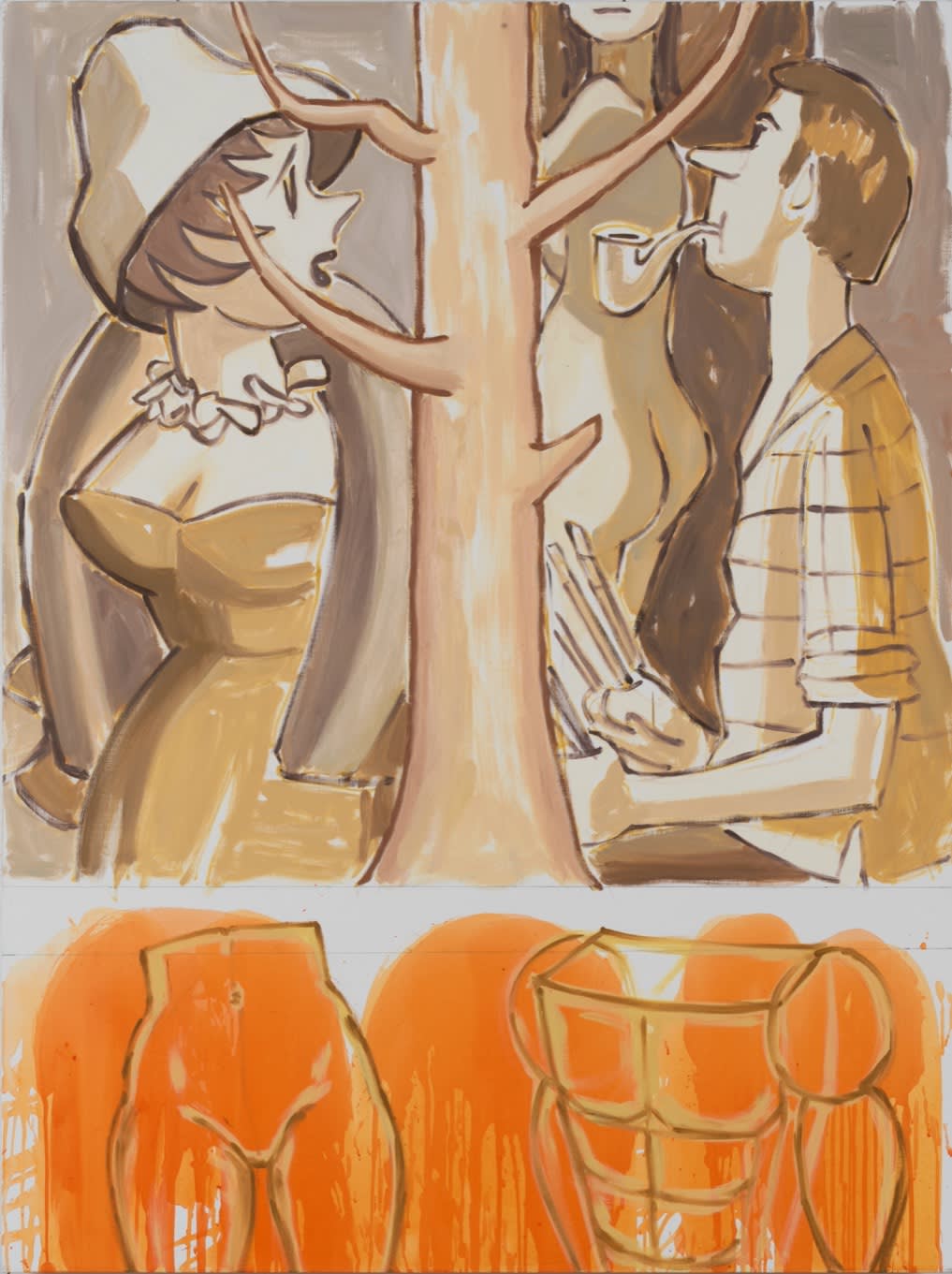
Oil and acrylic on linen
142.2 x 106.7 cm (56 x 42 in)
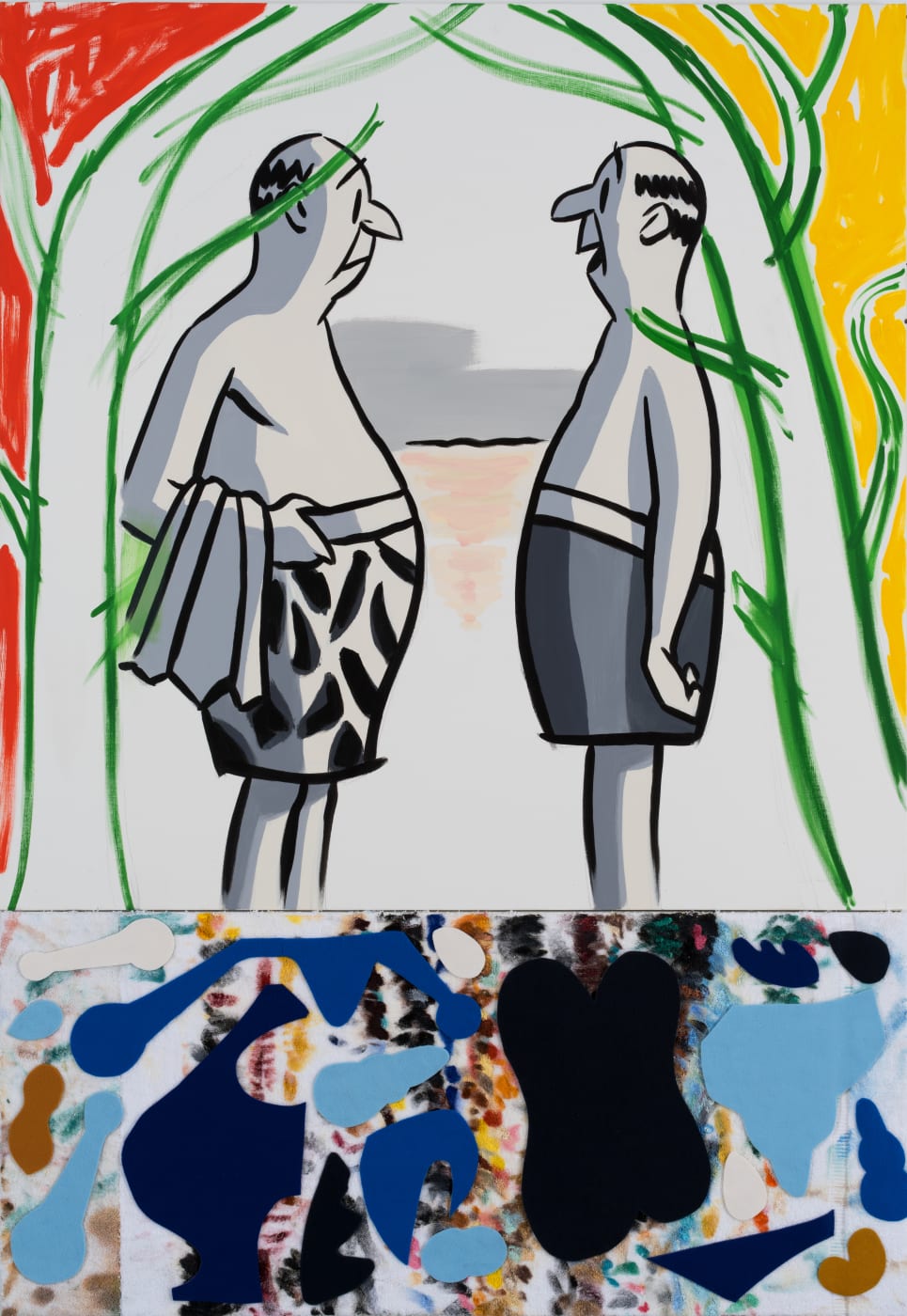
Salle’s fractured compositions eschew any linear interpretation. The everyman and woman, represented throughout the series as types, invite viewers to project their own experience onto the scene and form their own understanding of the characters' dramatic interactions. In the same way, the multiplicity of visual references across the various components of the painting generates what the artist calls the ‘malleability of meaning’ that is at the heart of his oeuvre. The paintings are engaging without being descriptive.
Tree of Life, Bathing, 2022
Oil and acrylic on linen with cotton toweling and felt
198.1 x 137.2 cm (78 x 54 in)
They're like music, in a way [...] Being able to identify the notes doesn’t say much about what it feels like to listen to the music. — David Salle

























































































































































































